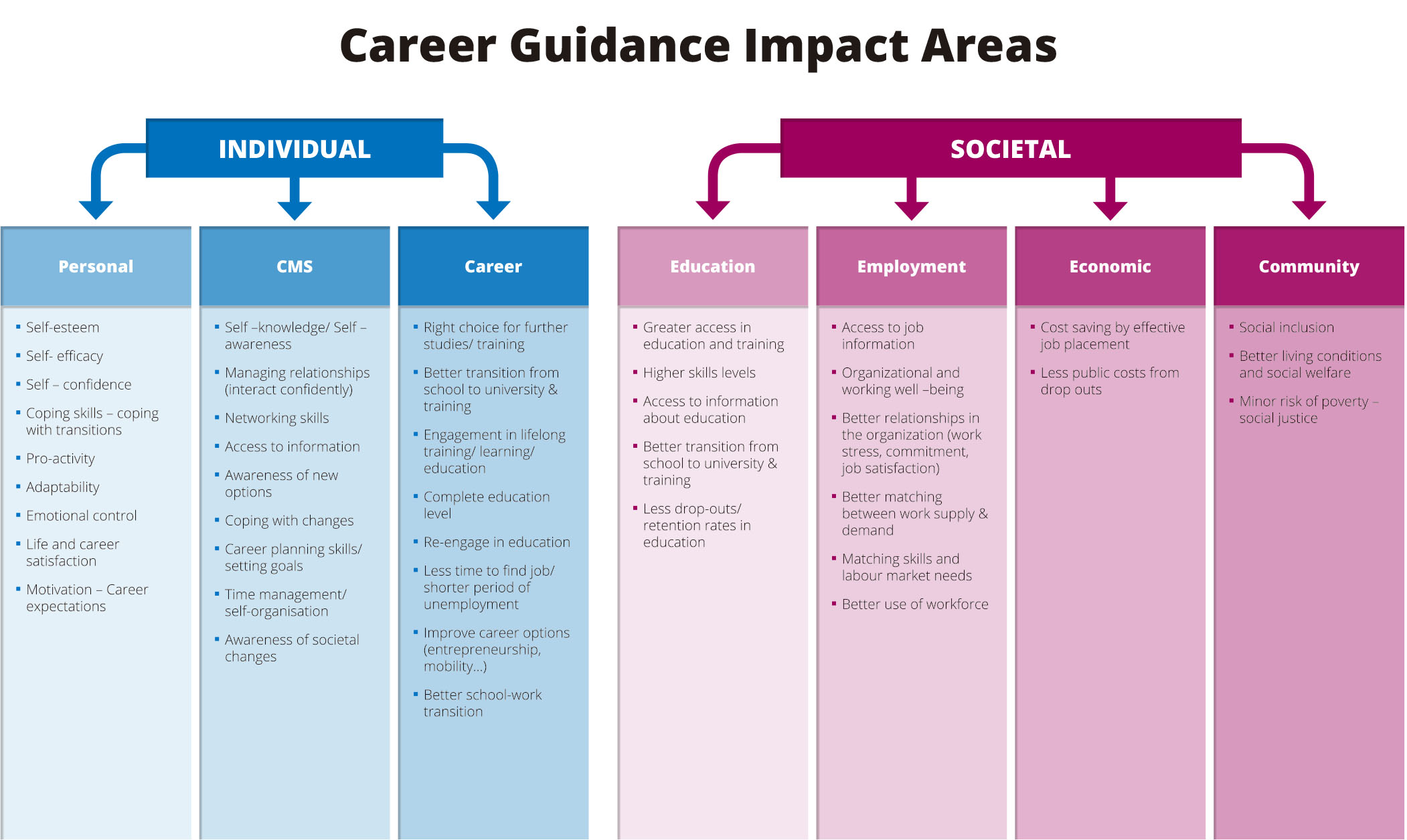Keyway Map of Impacts of academic and career guidance
The following is the Keyway map of the impacts of guidance services on the Individual throughout his/her life. The focus is on the impact of the three main elements of guidance services: career information, career education and career counselling. Two broad levels of impact are differentiated:
- the micro level centered on the individual aspects (the main aim of guidance services) and
- the macro level that comprises all the societal aspects.

Context
Methodology
- A1 – Desk Research
- A2 – Brainstorming session
- A3 – Interviews with experts
- A4 – Group session
- A5 – Proposal of the Map
In order to create the Keyway impact map of guidance services, the partnership did desk research in order to gather the collective existing studies on guidance impact and then prioritized and selected those that are most relevant to the Keyway project. So, every partner collected studies, articles, researches that have been done in their country or in international level, referring to the impact that career guidance services have on personal, social, political, economic level etc. The most important of them were written down in a report, for further elaboration. Then, the Keyway Project team held a brainstorming session, in order to define the areas of Career Guidance Impact and the most important impacts divided into categories. The partners had first the chance to have a preview of the most known categorisations of impacts and afterwards through discussion and brainstorming they concluded into the KEYWAY categorisation. The next step for each partner was to make Interviews with 3 experts, in order to give their feedback and ideas on the construction of the Impact Map. The intention of the interviews was to gather information by asking individuals to respond to questions posed by the moderator, and then asking them to prioritize those ideas or suggestions. The experts first answered questions regarding the Impact of Guidance, without having seen the results of the brainstorming session of the partnership. Then, after having a preview of the results they gave their feedback, making changes, adding outcomes, proposing new ideas. The next step was the group session with experts. The partnership employed consensus methodologies in order to review the proposed impact map with experts, thus creating ownership and ensuring of reflection of the on-the-ground reality. The methodology that was used with experts is the Nominal group technique (NGT), which is a structured type of small-group discussion technique in order to reach consensus. NGT gathers information by asking individuals to respond to questions posed by a moderator, and then asking participants to prioritize the ideas or suggestions of all group members. The methodology prevents domination of the discussion by only one participant and results in a prioritization of recommendations from the group. The experts answered questions regarding the Impact of Guidance, taking into consideration the proposed Impact Map and the results of the interviews with the experts, making changes, adding outcomes, proposing new ideas. After completing the 4 steps, the partnership concluded in the final proposal of the Impact Map, presented here.
